Mars Statistics
| Planetary Symbol: |
 |
Name in Roman/Greek Mythology: |
Mars/Ares |
| Diameter: |
6,785 km (4,217 miles) |
Rotation Period about Axis: |
24.6 hrs |
| Mass: |
0.64x10^24 kilograms (0.11 x Earth's) |
Revolution Period about the Sun: |
1.88 years |
| Density: |
3,933 kg/m^3 |
Tilt of Axis: |
25o 12" |
| Minimum Distance from Sun: |
205 million km
(128 million miles) |
Surface Gravity: |
3.7 m/s^2 (0.37 x Earth's) |
| Maximum Distance from Sun: |
249 million km
(155 million miles) |
Temperature: |
-129o C to 0o C
( -200o F to 32o F) |
| Orbital Semimajor Axis: |
1.52 AU (Earth=1 AU) |
Average Surface Temperature (K): |
218K |
| Minimum Distance from Earth: |
35 million miles |
Satellites: |
2 |
 Mars Image Archive
Mars Image Archive
 Comparative Planetary Statistics -- in table form
Comparative Planetary Statistics -- in table form
 Comparative Orbital Statistics -- in table form
Comparative Orbital Statistics -- in table form
 Actual Distance to Earth
Actual Distance to Earth
You might also be interested in:

Ares was the Greek god of war. He was identified with the Roman god, Mars. Ares was driven by rage and a strong desire for violence. He enjoyed the great noise of battle, and he loved bloody warfare.
...more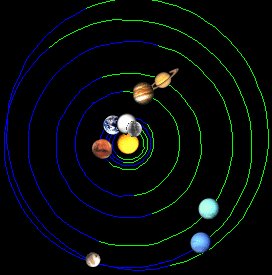
There is a really neat internet program called Solar System Live that shows the position of all of the planets and the Sun for any given day. If you go to that page, you'll see an image similar to the
...more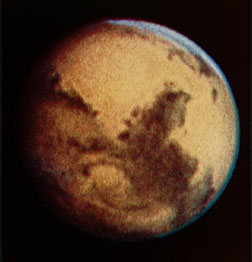
Mars is much like Venus-- it's very bright and therefore easily spotted in the night sky. Because of this, we don't know who exactly discovered Mars. We do know it was named after the Roman god of war,
...more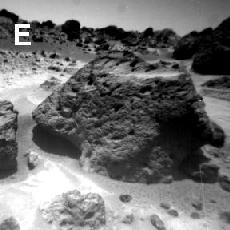
The surface pressure of Mars is about 1/150th that of the surface pressure of the Earth. This means that there are much fewer molecules in the atmosphere. This means that the atmosphere near the surface
...more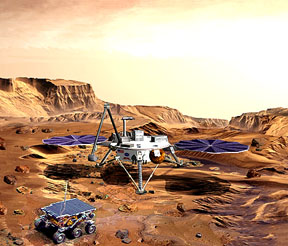
If approved, the Mars 2003 mission will have two important parts. The first is the Mars Surveyor 2003 Lander, which will be launched sometime between May 27, 2003, and June 17, 2003. The lander will use
...more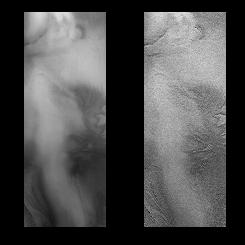
This image of a potential landing site for the Mars '98 mission was provided by the Mars Global Surveyor mission. The landing site was suppose to be in the south polar region of Mars. In the image, ground
...more
Originally, the Mars Global Surveyor entered a highly elliptical orbit around Mars (as shown here). MGS's furthest point of orbit or its apoapsis was ~56,000 kilometers while the periapsis or closest point
...more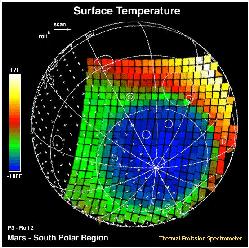
This image shows how cold the surface of Mars can be. The temperature data is from the Mars Global Surveyor mission. The scale to the left shows that purple regions are the coldest, about -170 degrees
...more

 Comparative Planetary Statistics -- in table form
Comparative Planetary Statistics -- in table form
 Comparative Orbital Statistics -- in table form
Comparative Orbital Statistics -- in table form


 Mars Image Archive
Mars Image Archive











